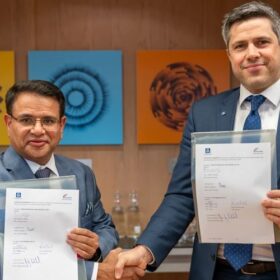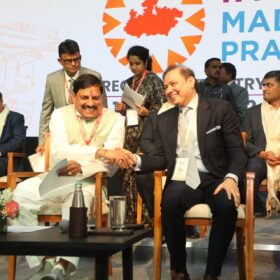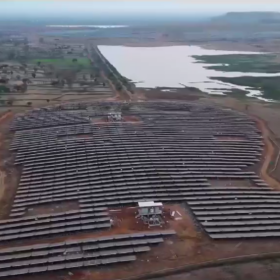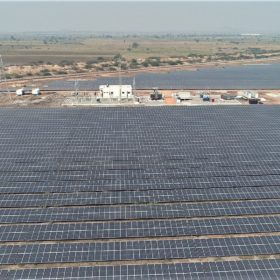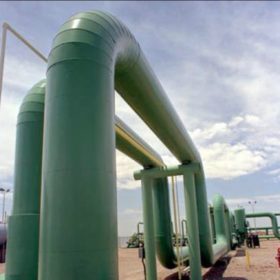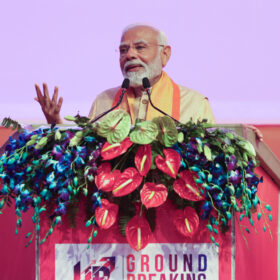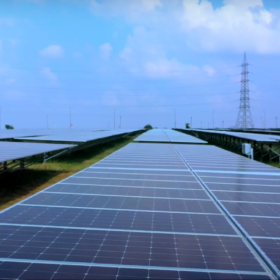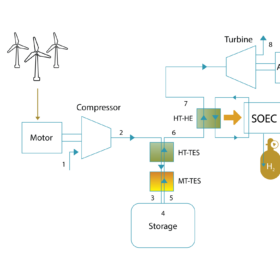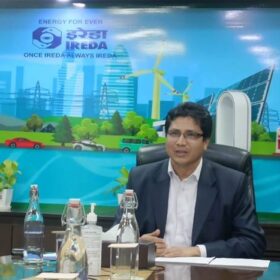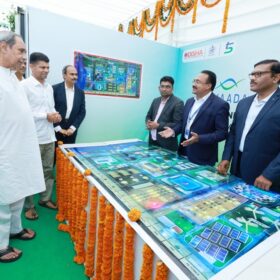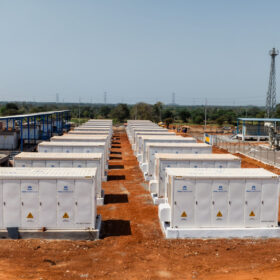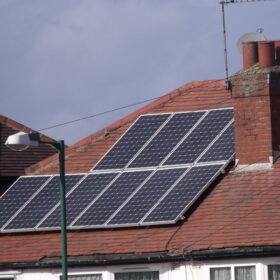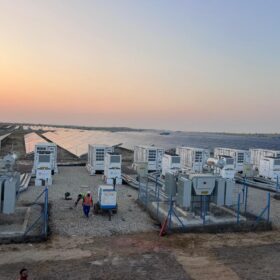The Hydrogen Stream: Acme to supply 100,000 tons per annum of green ammonia to Yara
Acme has secured a long-term offtake contract with Norway’s Yara for 100,000 tons per annum of ammonia from renewables.
Adani Group commits INR 28,000 crore to setting up 3.41 GW of pumped storage projects in Madhya Pradesh
Earlier this year, Adani Group also announced pumped storage investments in Tamil Nadu and Telangana.
SECI unveils India’s largest solar-battery storage project
The battery energy storage system (BESS) with an installed capacity of 152.325 MWh has a dispatchable capacity of 100 MW AC (155.02 MW peak DC) solar power with 40 MW/120 MWh BESS. The project is located in Rajnandgaon, Chhattisgarh.
The rise of green finance: Financing the future of renewable energy in India
India has witnessed a surge in solar and wind energy projects, backed by investments from both domestic and international sources. Green finance plays a pivotal role in funding these projects.
The Hydrogen Stream: NTPC secures land lease agreement for 1,200-acre green hydrogen hub
NTPC Green Energy Ltd (NGEL) hax signed a land lease agreement with Andhra Pradesh Industrial Infrastructure Corp. (APIIC) for the development of an integrated green hydrogen hub on 1,200 acres land in Andhra Pradesh.
PM Narendra Modi lays foundation stone for Torrent’s solar, pumped storage, green hydrogen projects in Uttar Pradesh
Torrent Group will develop 4.15 GW of pumped storage, a 150 MW solar power plant, and a pilot green hydrogen production facility in the Indian state of Uttar Pradesh.
The Hydrogen Stream: ReNew begins work on 1.2 mmtpa green ammonia plant in Odisha
ReNew E-Fuels is developing a green ammonia plant with a production capacity of 1.2 mmtpa (million metric tonnes per annum) in the Indian state of Odisha.
Green hydrogen, power generation tech based on compressed air storage, solid-oxide electrolysis cells
Scientists in Korea have developed a compressed air storage system that can be used as a combined cooling, heat, and power system and provide heat and power to solid-oxide electrolysis cells for hydrogen generation. It showed an overall roundtrip efficiency of 121.2% and over-unity efficiencies in the range of 100% to 120%.
India needs INR 30 lakh crore investment during FY 2024-30 to meet its COP Climate Pledges: IREDA CMD
The investment is required in building capacities across solar, hydro, wind, and waste-to-energy sectors, green hydrogen (including electrolyzers), batteries, and transmission.
The Hydrogen Stream: ACME, Avaada begin work on green hydrogen and ammonia projects in the Indian state of Odisha
Chief Minister of Odisha, Naveen Patnaik, laid the foundation stone for Acme Cleantech’s 1.1 mmtpa green ammonia plant and Avaada Green’s 0.5 mtpa green hydrogen/ammonia facility at Gopalpur Industrial Park.
